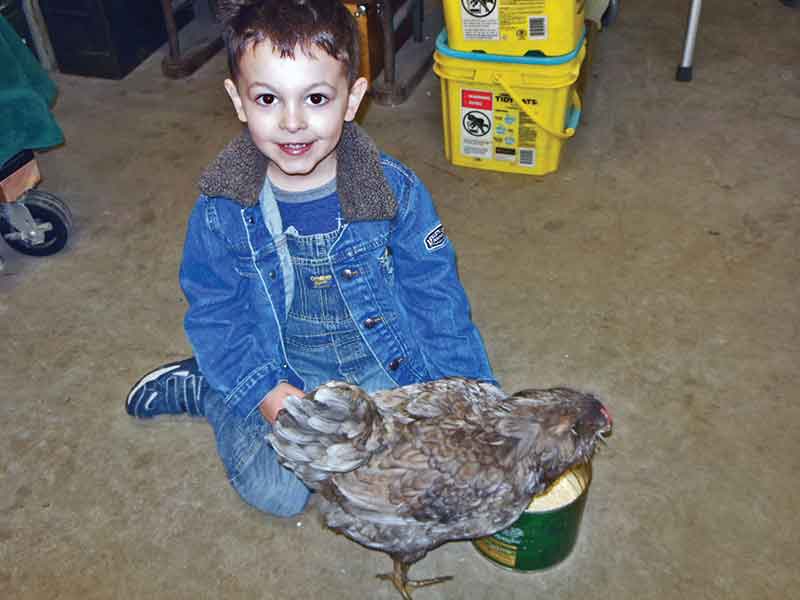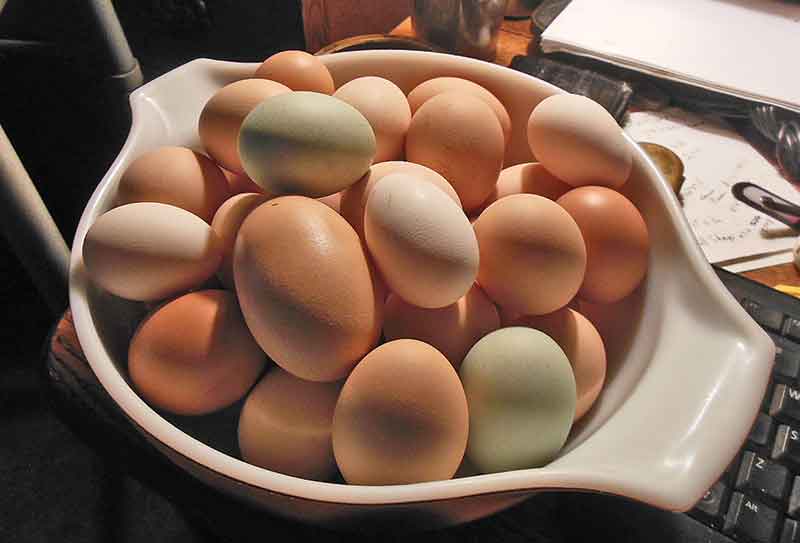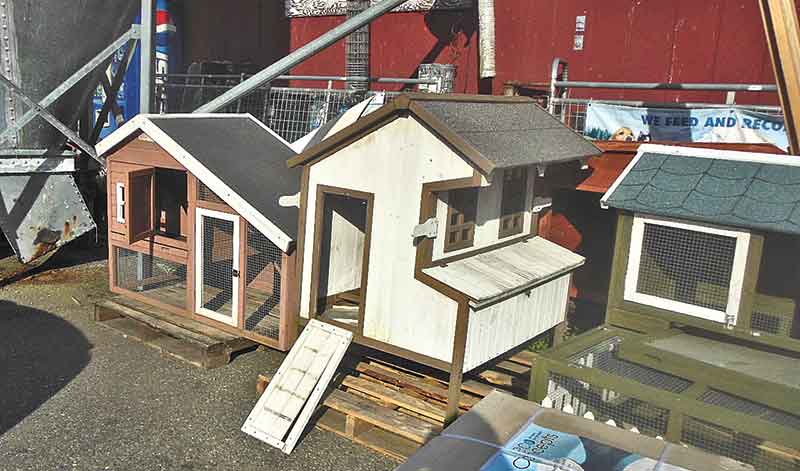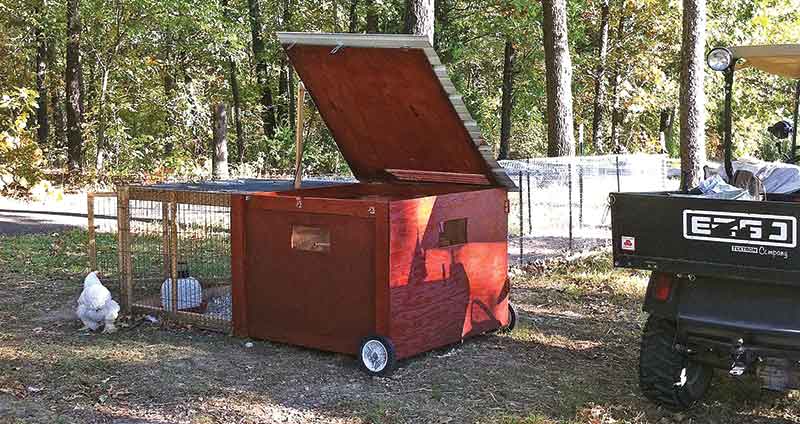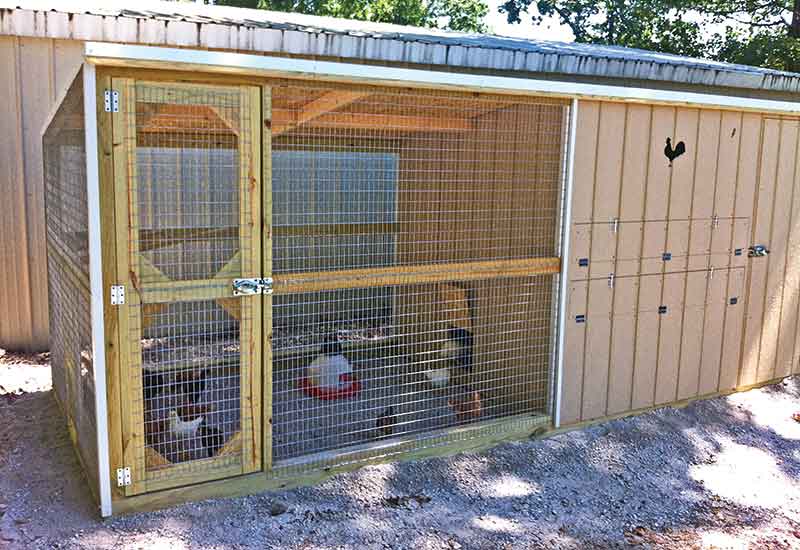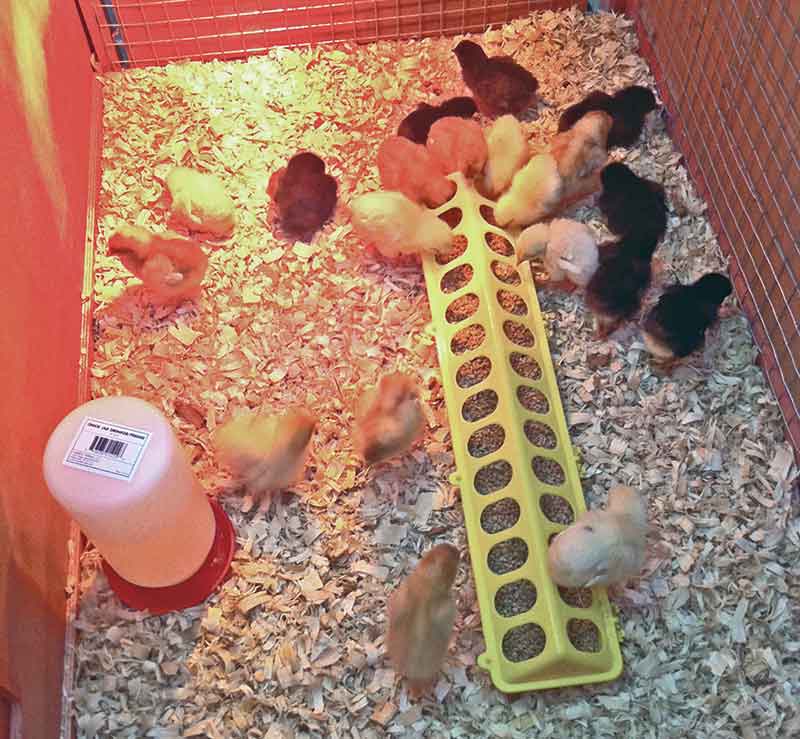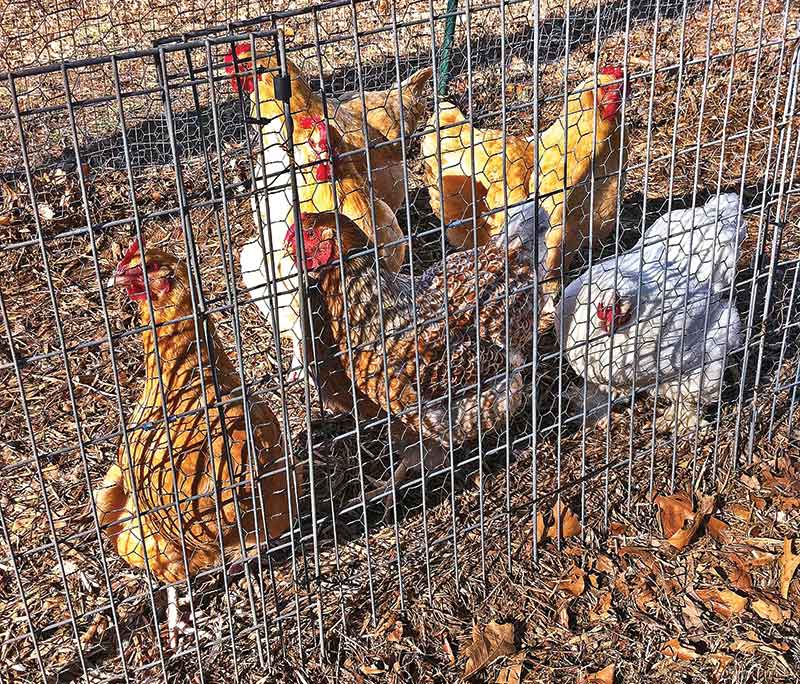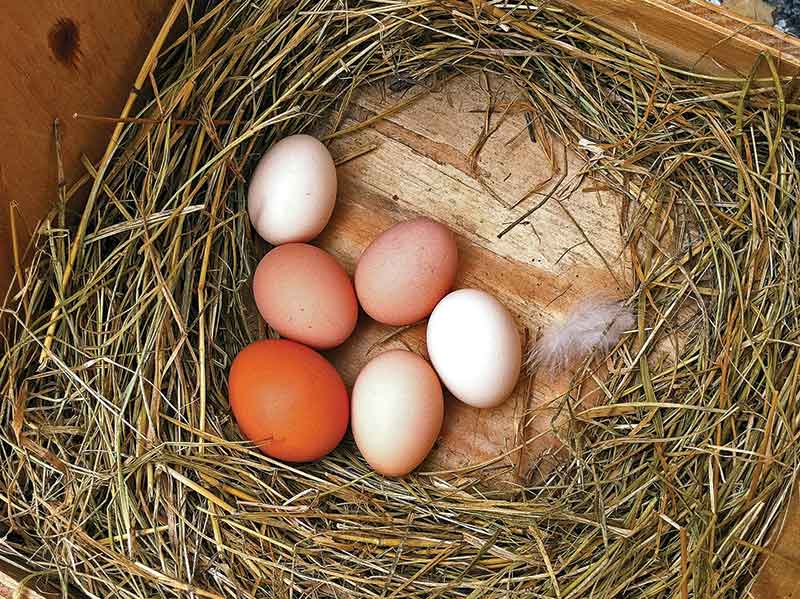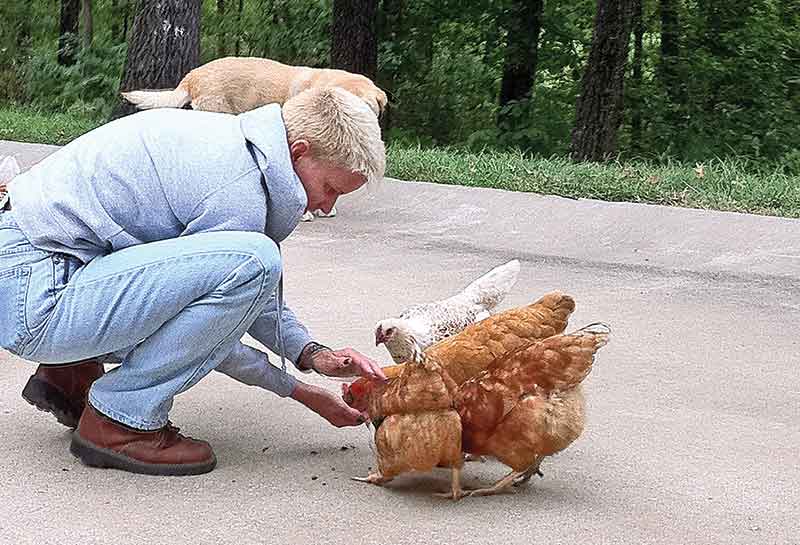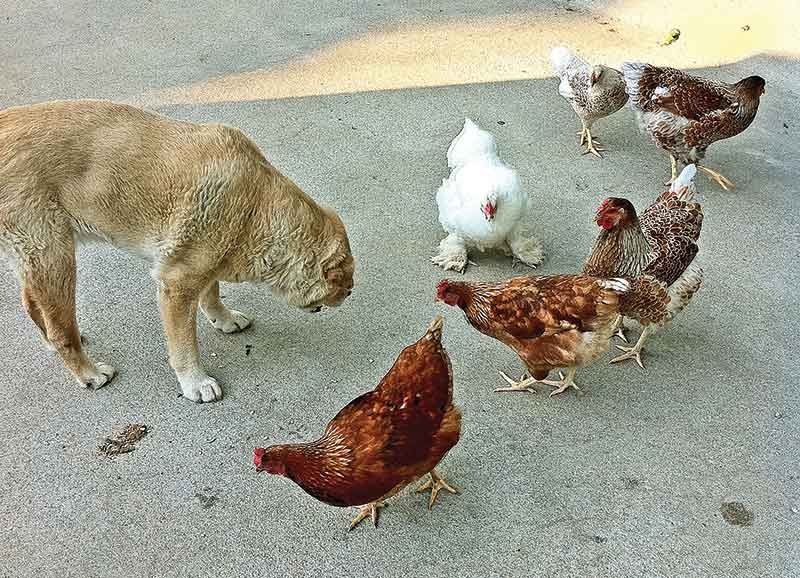Raising Chickens For Survival: It's More Than Eggs and Meat
A flock brings fun and festivity into your yard,
helping your good humor survive too!
Best of all? It's easy ...
Much time and energy is focused on guns, tools, shelter and such in case of an emergency or survival situation. And that’s all fine — you should be prepared in every one of those categories.
And trust me, canned beans and dehydrated grain products get old fast.
But there’s a remarkably easy way to both augment your diet and have a lot of fun in the process — raising chickens!
It’s not only a rewarding hobby to spend time on while society clicks away on their devices — we do it for the eggs and even a chicken dinner in a pinch. It’s amazingly easy, inexpensive and a never-ending source of good humor. Whoever said chickens don’t have personalities has never lived around ’em for any length of time!
Getting Organized
The thing you need to look at first is how many eggs a day you want. A dozen hens will give you eight to ten eggs a day. We like having a rooster too, as they perform multiple functions. If you get a good one, he will be the leader and protector of his girls, providing the breeding function. And we just like the sound of chickens in the yard. They cluck and fuss and scratch and cluster and add life and adventure to your place.
Our rooster, Dempsey, will stand in the middle of the field and crow and crow until all his girls come out from wherever they are, so he can do a head count. He then lets them go back to what they were doing. He does this a couple of times a day, and he has all his girls back in the coop by sundown. He’s a tough SOB too, and I’ve not cut his spurs off. He can be foul humored at times, but we’ve found if you carry a staff he won’t mess with you. So we have bamboo staffs staged around the place: the front gate, on both porches and outside my shop door. Roosters are handy, even practical, but they do need to be reminded who’s boss sometimes!
If you decide to give this chicken raising a shot, it’s my advice to start out small. Get a half-dozen chicks and see how it all works out. You might end up with a couple hens and a couple roosters. That way you’ll find out if you want to butcher chickens for meat. I can do it but you can’t make me like it.
Don’t run out and get two-dozen chicks, just sneak up on it. That way you’ll be a lot smarter about what you want to end up doing and what you’re capable of doing. A few chicks (they’re easy to raise) will give you two or three eggs a day once they start laying and take no more than five minutes tops daily to care for. If you like it, bingo, get more. Publisher Roy Huntington (the guru of this magazine) raises ’em at times, and he has had 20 or more at one time — over a dozen eggs a day! It gets to where you can’t give ’em away fast enough. Make sure your friends save their egg cartons too!
The Basics
You get to plan a coop and the pen. They both have to be vermin-proof, so you don’t end up like “Chicken Delight” for the raccoons and other critters that love to eat poultry. Our chicken coop is an 8’x8′ section of the barn. It’s all caged in with hardware cloth and a secure door. The nest boxes are plastic milk crates attached to the walls at different heights.
Our barn just happens to be built on a slope with the west side about 3 feet off the ground. I built a 16″x16″ removable panel in the middle of the floor. This way, with a wheelbarrow under the barn, we just remove the panel and rake the old straw to the center of the room and it falls into the wheelbarrow. This makes periodic cleaning of the coop a lot easier. It’s very important to keep their coop clean with fresh straw or wood chips. We also dust the coop with a product called “Sevin” to control lice and mites.
Take a look online at “chicken tractors.” There’re lots of web sites with pictures and plans. These are small pens with nest boxes, all on wheels so you can move them around your area. I have used 4’x8′ pen on old lawnmower wheels, covered with chicken wire to raise pheasants. Every week, you just roll it about 8 feet to give them a whole new feed patch.
Making more chickens ain’t that hard. You learn pretty quickly which hen is the “broody” one. She’s the one who prefers to stay on the nest rather than go outside and growls and pecks at you when you try and retrieve the eggs. She’s just doing what comes naturally, protecting her brood.
Now you get to build a nursery. Hens need some sort of separate nesting place where she can get away from everybody and hatch her eggs. She will need her own feed and water. It’s a good idea to mark the eggs she wants to hatch, say with a Sharpie. That way you can check on individual egg development when candling. Candling is where you use a bright flashlight and look “through” the egg with the light behind it to see how they’re doing. It used to be done with a candle. You will do it a couple times during the process.
She’ll sit on her eggs for about 21 days. It might take a couple of tries with different hens to find a good broody one. Some might not sit long enough or might kill the chicks when they hatch. You have no way of knowing. This is all done by trial and error. Some breeds make better broodies than others. Do your research! When I was a kid, we had a Banty hen that would try and hatch a doorknob if you let her. Sometimes we would bring home wild duck eggs and let her hatch them out and then watch her go nuts when the baby ducks went for the pond. She hatched everything we gave her, quail, pheasant, killdeer, even a robin.
When you first start getting eggs, you will see some strange things. Some hens will lay double yolk eggs at first or really small eggs. We’ve even had eggs with no shell, just a tuff membrane — that’s a strange one.
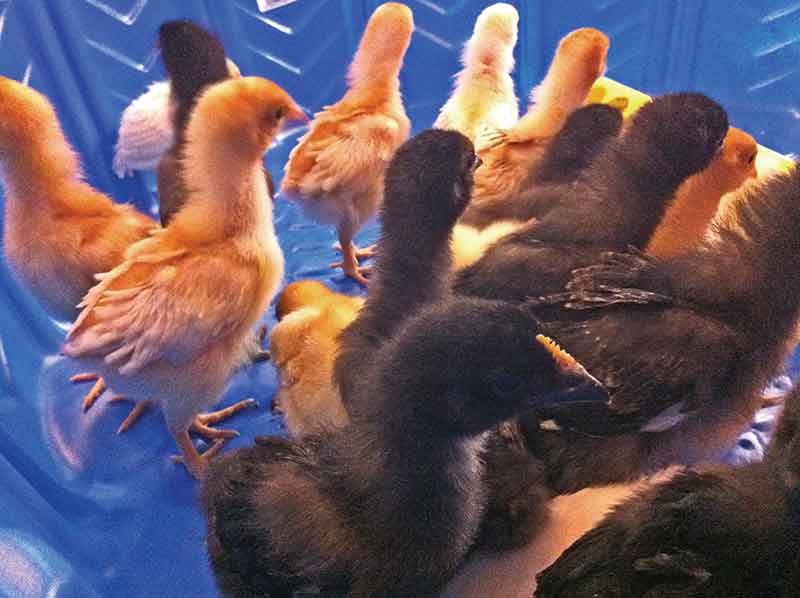
As they grow, a kid’s plastic pool (with bedding (above), heat lamp and water/food)
makes a great temporary “coop” with a netting cover. But it needs to be inside a
garage or shed to keep them safe and warm. This old Winchester Model 67 .22 with
a light attached (below) is Jim’s “Chicken Gun,” used to ward off raccoons and
the like. You’ll need something too if you raise chickens!
Feed and Protect
It’s easy to over-feed chickens. Free-range chickens don’t need that much feed. That is the idea — you want them outside getting those bugs and worms. It makes for better eggs and more flavorful, darker yolks. They will find your compost pile and turn it over for you. Well, they will tear it up and spread it around. You get to fork it back into a pile.
If you are after eggs, feed them a little “layer” feed. It has calcium for better, harder eggshells. Broodies need “scratch” for the carbohydrates and protein. They don’t need layer, they should get “chick starter” because that’s what chicks need when they hatch. Cracked corn is like candy to chickens. But don’t feed them too much of it, because too much corn will impair or stop egg production.
We store all our chicken feed in galvanized garbage cans with bungee cord securing the lids. This keeps the other critters and vermin out of the feed. The only problem with this is when you go to take the garbage out, and you pull the lid off the garbage can, all the pheasants I’ve raised and turned loose, come flying out of the woods and mill around your feet thinking they are going to get fed.
You must be prepared to protect you chickens and this is best done with a good .22 rifle. I prefer .22 Short hollowpoints. They are nice and quiet and deadly out to about 50 yards without overpenetrating. I restored a Winchester Model 67 Boy’s rifle for my wife Bonnie. It’s her “Garden Gun” that lives just inside the back door. Basically, your chickens are food for everything out there: raccoons, coyotes, feral dogs — you name it, they eat chickens. It’s not uncommon if you have free-ranging chickens to find a pile of feathers now and again.
Which reminds me, don’t name ’em. If you name them, then they get personalities (which they’ll have anyway). But then when one gets eaten, it’s not, “Oh, they ate a chicken.” It’s, “Oh no, Zelda got eaten!”
The next thing is a good dog. Not one that kills chickens but one that hates raccoons and possums. Between a good dog and a good rooster, they will let you know if anything is after the girls. We happen to have a 6′ chain link fence around an acre, which provides pretty good security. We had a 130-pound female Akita named Michi who hated raccoons and possums. She would literally eviscerate them, but enjoyed just watching the chickens. When there were baby chicks in the barn, Michi would sleep in the barn to keep and eye on things.
Over the years we’ve raised a bunch of different breed of chickens. Bonnie likes all the varieties, kind of like “Rainbow Chickens.” A favorite breed has been the Araucana or Americana because they lay colored eggs — light blue or green in color — and they’re known as Easter Egg chickens. We make sure there is at least one colored egg in each dozen we sell to our friends.
Besides, it’s fun to have different breeds running around the yard. Crested Polish are a conversation piece. And there was a rooster we named Shaka Zulu.
Another beautiful breed is the Yokohama. The roosters’ tail feathers grow really long. We had a Yokohama rooster named Tojo. He knew I sometimes carried cracked corn in my shirt pocket and would fly and land on my shoulder and stick his head down into my shirt pocket looking for a treat.
Personality-Plus
I know chickens only have a brain about the size of a BB, but they can develop a personality and become quite a friend. We got Izzie, an Americana, as a chick a couple years ago, and within a day or two we discovered she had a damaged lower jaw and beak. Her lower jaw is not properly aligned. It sets at about a 30-degree angle to her upper beak. This meant she has difficulty in picking up food. We don’t know how this happened.
So we’ve always handfed her. This has resulted in Izzie’s development into a very special and colorful personality. My wife Bonnie carries a small-galvanized bucket with a bed of cracked corn to retrieve the eggs. Izzie has learned this bucket is a good food source. When Bonnie turns her “girls” out for the day, Izzie will ride the lip of the bucket back toward the house. She then jumps off the bucket and heads for my shop because she knows I keep a 3-pound coffee can of feed there.
Izzie runs right into my shop and finds her feed can. It’s usually on the floor next to the compressor. If I have put the lid on her feed can, she mills around and plaintively looks at me as if I have done her some grave injustice. If I ignore her, she then jumps up on my lap to question both the logic and intent behind my lapse in judgement. She enjoys being petted and scratched and all of our company in general.
In the winter, when the door is closed, she jumps and gets in the window to let me know she’s there and ready for her feed fix. She also seems to enjoy most anything I have to munch on from potato chips, apples and sandwiches to anything Bonnie brings us for lunch. I think she figures if I’m eating it, it must be good stuff.
She’s very curious and shows great interest in whatever I’m doing in my shop. She will get up in my lap or the workbench so she can see better, and it’s like she’s trying to figure out not only what I’m doing but also how I’m doing it.
I have MS so I can relate with Izzie’s situation. We both have special needs, and Bonnie is both our caregiver and mentor.
All in all, they’re much more than just fresh eggs and chicken tenders. They bring a fuss and fanfare to the yard, and you’ll find yourself talking to them all the time. And yup, they even answer at times.
To paraphrase Winston Churchill, “There’s something about the outside of an animal that’s good for the inside of a man.”
True in more ways than the obvious when it comes to chickens!


